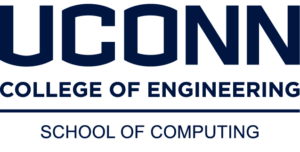Understanding Horizontal Gene Transfer in Bacteria and Archaea: Units of Transfer and Modes of Integration
Professor Bansal is leading a research project, recently funded by the NSF, to develop new computational methods for studying Horizontal Gene Transfer (HGT) in microbes. HGT is known to be one of the most important drivers of microbial evolution and an improved understanding of this evolutionary process is critical to understanding how microbes evolve, adapt, and thrive. Yet, even after decades of intensive research, many fundamental aspects of HGT remain poorly understood.
Professor Bansal is collaborating with Professors J. Peter Gogarten and Joerg Graf, both at UConn’s Department of Molecular and Cellular Biology, to develop the first, broadly applicable, computational methods and algorithms to infer fundamental properties of individual HGT events, use these methods to investigate the frequencies and roles of the different types of HGT events in various evolutionary scenarios, and test specific hypotheses relating the properties of HGT events to evolutionary divergence, HGT integration mechanism, and gene function. This work will help shed light on many aspects of microbial evolution, including the adaptation of microbes to new ecological niches, evolution and spread of antibiotic resistance genes, the rise of emerging pathogens, and competition between microbes. The outcomes of this research will include new computational methods and techniques for analyzing HGT events, open-source software tools for use by biologists, and valuable new insights into different types of HGT events.
Further details on the project are available at https://www.nsf.gov/awardsearch/showAward?AWD_ID=1616514
